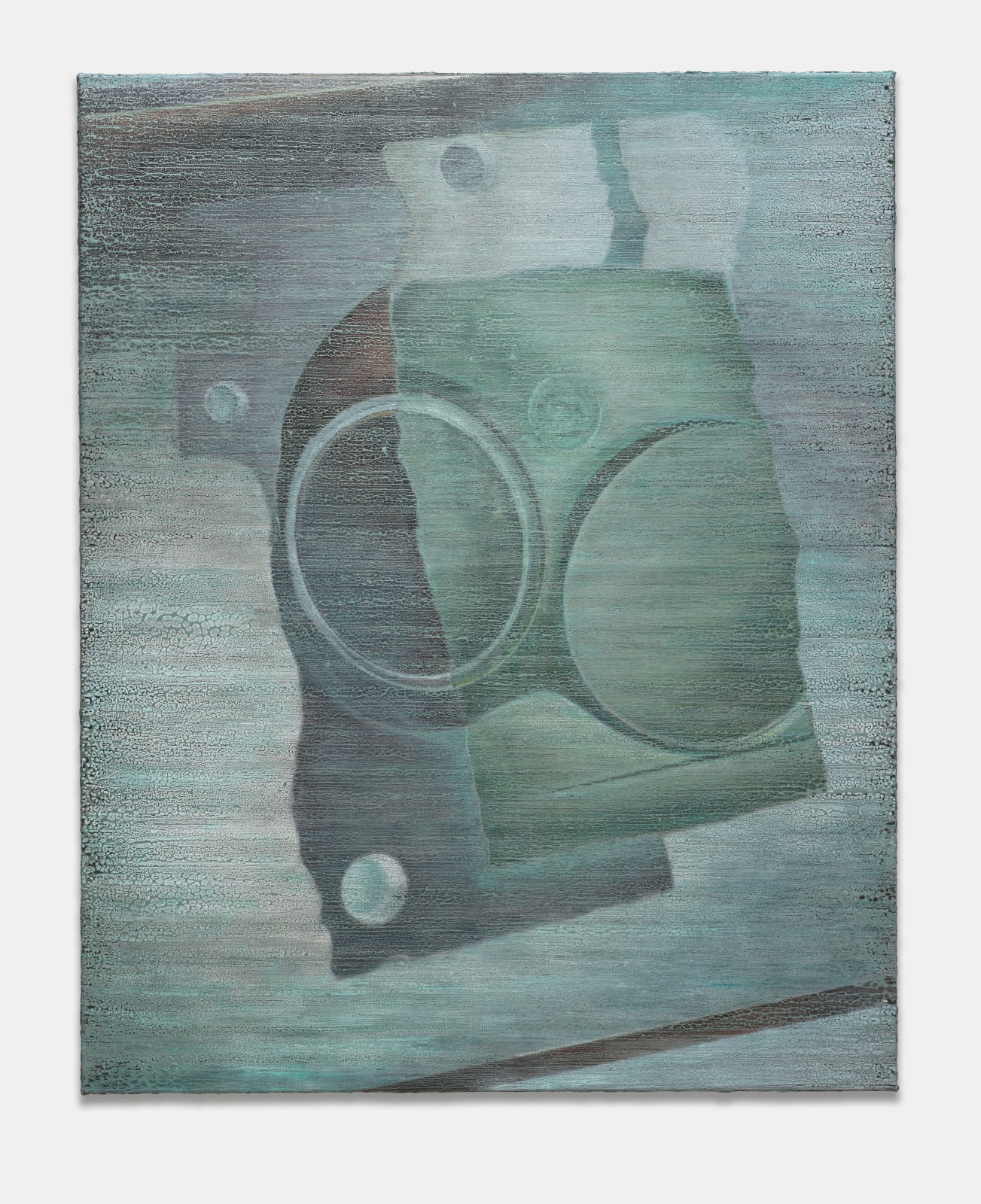Brett Ginsburg
Restoring Symmetry, 2025
acrylic on canvas
201 x 161 x 2.5 cm
79 1/4 x 63 1/2 x 1 in
unique
79 1/4 x 63 1/2 x 1 in
unique
'Restoring Symmetry,' 2025 takes as its starting point a digital scan of a combustion intake valve, a metal component in an engine that opens to let an air–fuel mixture enter...
'Restoring Symmetry,' 2025 takes as its starting point a digital scan of a combustion intake valve, a metal component in an engine that opens to let an air–fuel mixture enter the combustion chamber before ignition. The image originates from Brett Ginsburg’s research into engineered forms and molded hemispheres. These mechanical spaces, where fuel ignites under pressure, mirror geological events on a larger scale and suggest how small, manufactured forms can reflect planetary structures.
The imagery of the valve, it’s weightlessness and disorientation, for Ginsburg connected early modernist geometry with futuristic design. Painting the valve became a way for him to better understand its shape and spatial qualities through the act of making, translating digital information into gesture and material. The valve’s thin shell appears like a delicate veil, fractured at its edges, with a central seam that recalls a fault line. The iridescent color palette resembles the surface of an insect’s shell, reinforcing the connection between organic and mechanical worlds. Just as engineers often draw from evolutionary biology to innovate, Ginsburg explores that continuum by pushing these hybrid forms into new material and visual territories.
The imagery of the valve, it’s weightlessness and disorientation, for Ginsburg connected early modernist geometry with futuristic design. Painting the valve became a way for him to better understand its shape and spatial qualities through the act of making, translating digital information into gesture and material. The valve’s thin shell appears like a delicate veil, fractured at its edges, with a central seam that recalls a fault line. The iridescent color palette resembles the surface of an insect’s shell, reinforcing the connection between organic and mechanical worlds. Just as engineers often draw from evolutionary biology to innovate, Ginsburg explores that continuum by pushing these hybrid forms into new material and visual territories.




